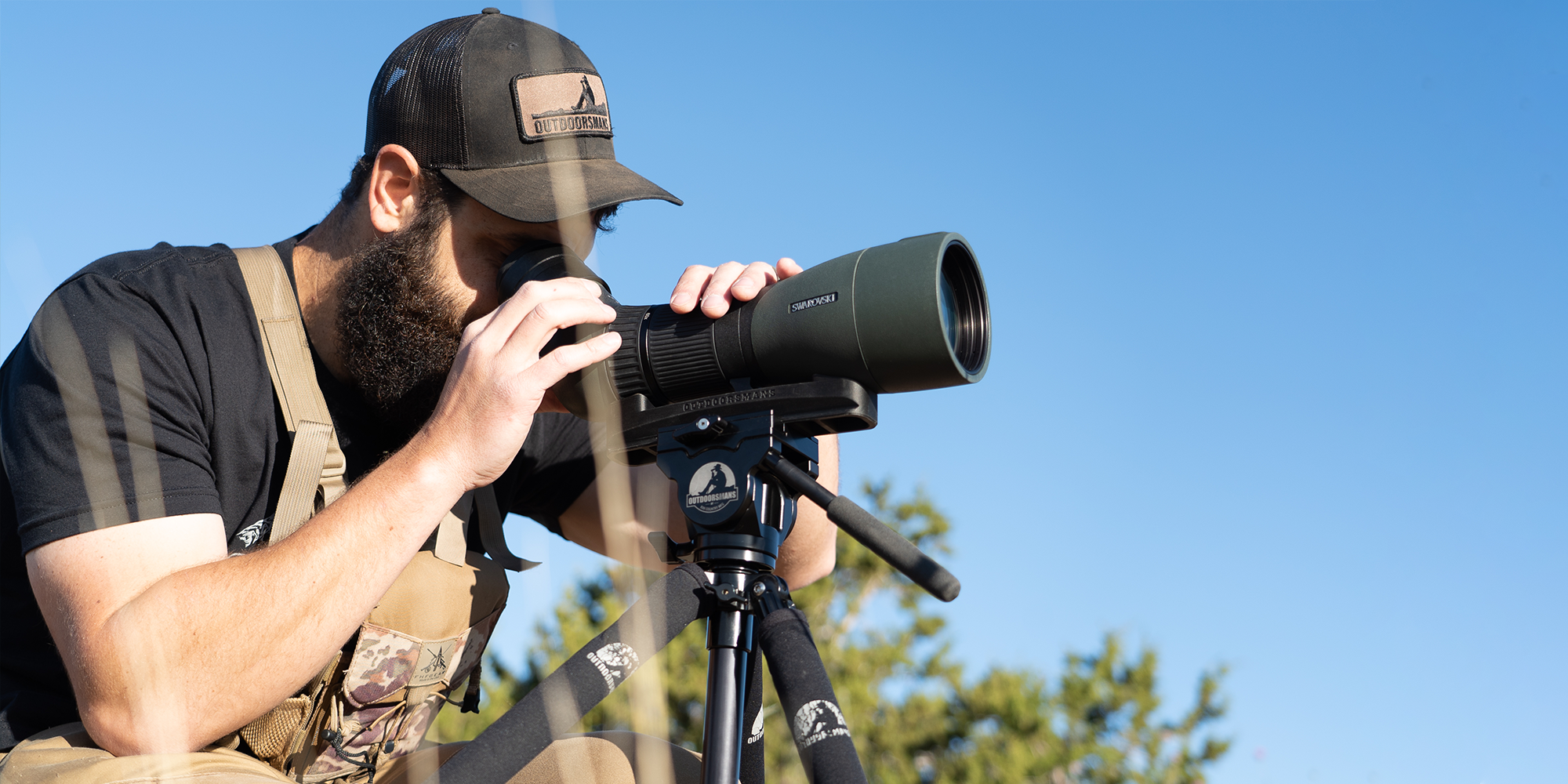on orders over $1,000
Angled vs Straight Spotting Scopes
by Douglas Morales
If you ever need a topic to argue about that has no ending skip the big ones (religion, politics, relationships) and dive head first into a heated discussion on angled spotting scopes versus straight spotting scopes.
Looking at the stats between Swarovski’s ATX and STX they are virtually identical in terms of what you see and how much you’re paying. The key difference is the straight eyepiece or the angled eyepiece. The only slight difference is the weight and length between the angled spotter and the straight scope.
Stat Comparison
|
ATX Spotting Scope 65mm |
STX Spotting Scope 65mm |
|
|
Field of view (1000 yds/degrees) |
126-81 ft |
126-81 ft |
|
Length |
14.6 in |
14.8 in |
|
Weight |
49.6 oz |
48.5 oz |
|
Shortest focusing distance |
9.8 ft |
9.8 ft |
|
MSRP |
$2,520.00 |
$2,520.00 |
Angled Spotting Scopes
The overarching theme to why people prefer angled spotting scopes is comfort. Many hunters believe looking down into their scope provides better long-term comfort and neck relief when glassing for hours on end.
Pros
Neck Relief - When sitting or standing the neck relief offered may be subjective. However, when laying prone on a target the angled spotting scope is very handy to keep by your side for a glance or to avoid looking through a rifle scope for long periods of time.
Sharing the view - With the ability to rotate the eyepiece it’s easier to share a spotting scope between two hunters with a significant difference in height.
Digiscoping Setups - Digiscoping is inarguably easier on an angled spotting scope. Your phone’s screen is tilted upward making it easier to manipulate than straight on.
Glassing Uphill - The angled eyepiece delivers a far better experience when glassing steep terrain.
Short Tripod Extension - The angled eyes gives you an extra 2-3 inches in height when compared to the straight eye piece. The extra height means you don’t have to extend your tripod to achieve a more stable platform.
Cons
Readjust your glassing position - Needing to readjust your glassing position when switching from your binoculars to your spotting scope is most people’s gripe with the angled eyepiece. In order to reacquire the target something has to change, whether it be your tripod height or your sitting position.
Awkward Form Factor - By nature the angled spotting scopes make packing them a bit trickier. They’re harder to get into and out of the pack's side pockets.
Downhill Glassing - It’s slightly more difficult to glass downhill at more extreme angles.

Straight Spotting Scopes
Straight spotting scopes are preferred by hunters mainly because there is little to no adjustment required to your tripod when switching between binoculars and spotting scopes. Straight spotting scopes are also easier to take in and out of your hunting pack’s side pockets which I prefer.
Pros
Faster Target Acquisition - Once you’ve found game with your binoculars switching to your spotting scope is a piece of cake as long as you keep that straight line with your tripod head. You shouldn’t need to change your seating position or your tripod’s position at all.
Window Mount Glassing - The straight spotting scope is easier to use inside of a vehicle whereas an angled spotting scope might not fit.
Packability - Slipping the straight spotting scope in and out of packs is no problem.
Cons
Discomfort - if your tripod isn’t quite tall enough it is possible you may have to crouch.
Tripod Height - Your tripod will be more affected by winds due to having to extend higher when compared to an angled spotting scope.
Thoughts from The Western Hunter’s Chris Denham
“When I’ve got a pair of binoculars on a tripod and I see something and I want to go to the spotting scope I don’t have to move the tripod. I just slide the binoculars off slide the spotting scope on, I don’t have to move the tripod up and down. Because everytime I do that it seems like now I have to start over and try and find the animal all over again.”
What does the Outdoorsmans shop think?
Here’s a silly video we put together getting off-the-cuff responses on which of Swarovski's modular spotting scope setups were preferred. It’s an entirely unscientific survey with the end result being angled having seven votes and the straight spotter just behind with six votes.
Conclusion
When making a decision on the right spotting scope, be sure spend a lot of time behind both straight or angled eyepieces at your nearest dealer. At the end of the day it is truly up to personal preference, weight, costs, size, and optical performance are all negligible when comparing the two. Personally I like the angled scope, mainly because I can share the view with my wife who is significantly shorter than me without having to readjust my tripod.

